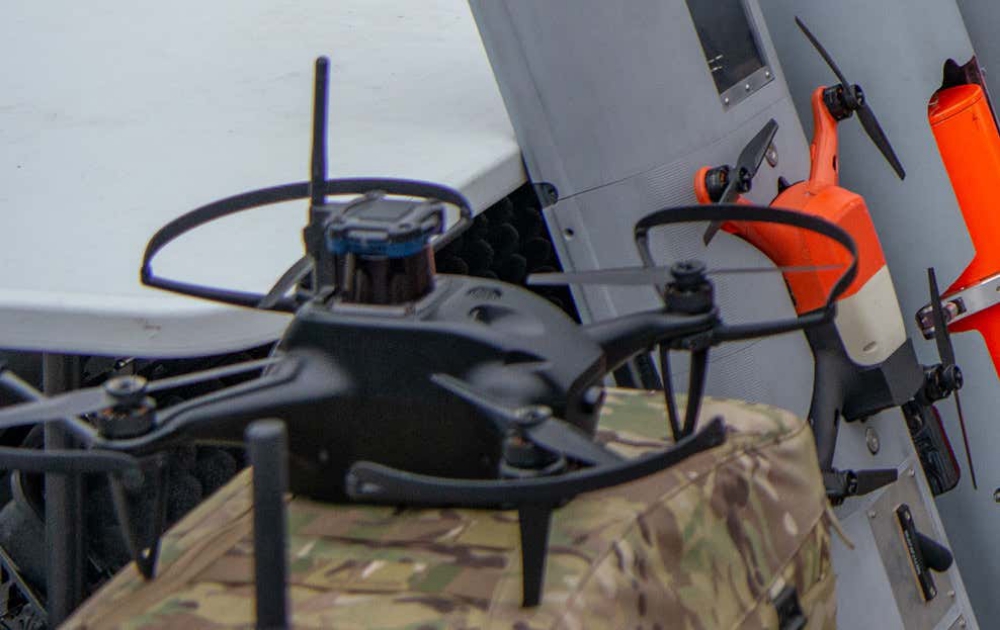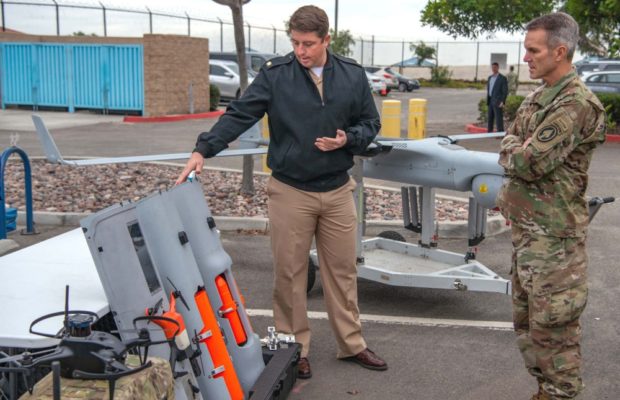The U.S. Navy has released a picture that shows a payload module for the Boeing Insitu RQ-21 Blackjack unmanned aircraft that appears to give it the ability to deploy a smaller quadcopter-type drone in flight. This module was seen displayed next to others that are clearly designed to hold small munitions or other expendable payloads.
U.S. Army Gen. Richard Clarke, head of U.S. Special Operations Command (SOCOM), was shown these payload options for the RQ-21, among other things, during a visit to the Naval Special Warfare Command (NSWC) headquarters in San Diego, California, earlier this month. NSWC oversees the Navy’s elite SEAL teams, as well as other naval special operations units. The captions attached to the pictures of Clarke’s visit that show the Blackjack misidentify it as a ScanEagle drone, a smaller and distinctly different Boeing Insitu design.
Within the U.S. military, both the Navy and Marine Corps operate RQ-21s, though the latter service is now in the process of divesting its entire fleet of these drones as part of a major overall of its entire force structure that you can read more about here. One of the Blackjack’s key features is the modular payload space in the center of its fuselage. Small wide-area motion imagery (WAMI) sensor systems, radars with imaging and ground moving target indicator (GMTI) functionality, and signal intelligence suites are among the payloads that are already known to be available for this unmanned aircraft. It also has a sensor turret with electro-optical and infrared cameras under its nose.
However, this appears to be the first look at this drone-launching module for the RQ-21, and it looks to be small enough to be installed on a Blackjack in combination with other payloads. In this case, there seems to be an optical sensor of some kind, which may be entirely unrelated, installed in front of the section holding the quadcopter.

Another look at the payload module offers a comparative view between its quadcopter drone and the ShieldAI Nova in the foreground
It is unclear whether or not this particular system can recover the smaller drone in flight after it completes its mission, but it seems unlikely from what we can see. The exact kinds of quadcopters it is designed to deploy are not immediately clear, but the one loaded onto it for the display certainly shares a general look of various commercially available types that are typically fitted with various types of small video cameras. It does appear to be smaller than the current generation ShieldAI Nova quadcopter, which is seen on display on a nearby table, has visual similarities to older Nova types. Nova-series quadcopters have been in use by Navy special operators for years now.
Source: The Drive

